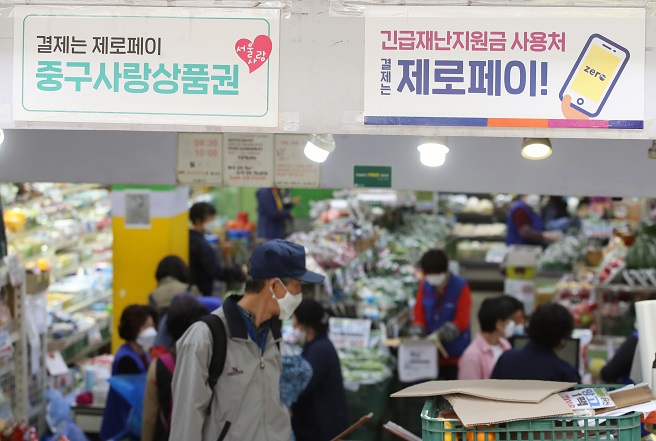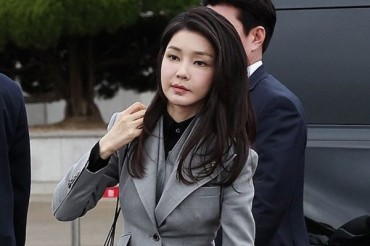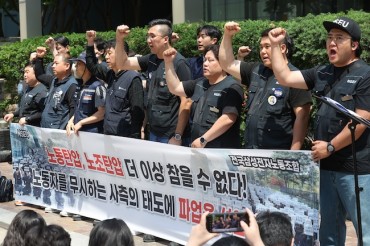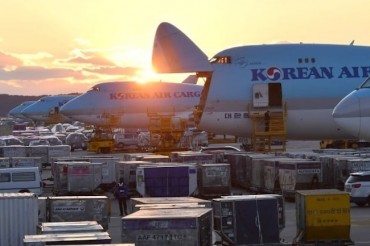
A promotional sign about the state relief funds is posted on the wall of a mart in Seoul on May 19, 2020. (Yonhap)
SEOUL, June 10 (Korea Bizwire) — The state coronavirus relief funds have been spent mostly on dining out and grocery shopping, the interior ministry said Wednesday, based on an analysis of credit card data.
The Ministry of Interior and Safety analyzed credit and debit card transactions from May 11-31 from eight financial firms to find out about spending behavior with the relief money.
As of May 31, a total of 5.67 trillion won in relief money was spent, and restaurants were the biggest spending destination with 1.44 trillion won, or 24.8 percent, followed by marts and grocery stores with 1.37 trillion won, or 24.2 percent.
Hospitals and pharmacies came in third with 590 billion won, or 10.4 percent.
Gas stations were the fourth biggest spending venue with 349 billion won, followed by clothing stores with 330 billion won, convenience stores with 259 billion won and private educational institutes with 248 billion won.
By business size, around 64 percent of the money was spent at midsized businesses with annual sales of 3 billion won or less. Twenty-six percent was spent at small businesses with annual sales of 300 million won or less.
On May 4, South Korea began paying out the relief money to help people cope with the economic impact of the unprecedented pandemic: 1 million won (US$813) each to households with four or more members, 800,000 won to three-person households, 600,000 won to two-person households and 400,000 won to single-person households.
According to the ministry, 99.5 percent of the total 21.7 million households received the one-off payment as of Sunday, for which 95.4 percent of the total budget of 14.2 trillion won was spent.
Households failing to apply for the emergency relief funds by Aug. 18 will be regarded as donors to the state. Recipients must spend the money by Aug. 31 or it will also be deemed a donation.
Since early May, the country’s credit card spending has surged thanks in part to the relief handouts.
For the fourth week of May, the total spending by credit cards amounted to 19.1 trillion won, up 26.7 percent from the same period last year.
Spending in traditional outdoor markets jumped to 324 billion won, up 20 percent from the first week of May.
Optical stores saw the biggest jump in sales, with 66.2 percent, followed by hospitals and pharmacies with 63.8 percent, cram schools with 37.9 percent, gyms and hair salons with 29.4 percent and furniture shops with 27.8 percent.
The ministry will “campaign for active spending and closely monitor the economic situation to make sure that the emergency relief funds are all used up to help the people’s livelihoods and the local economy,” Yoon Jong-in, vice minister at the ministry, said.
(Yonhap)






